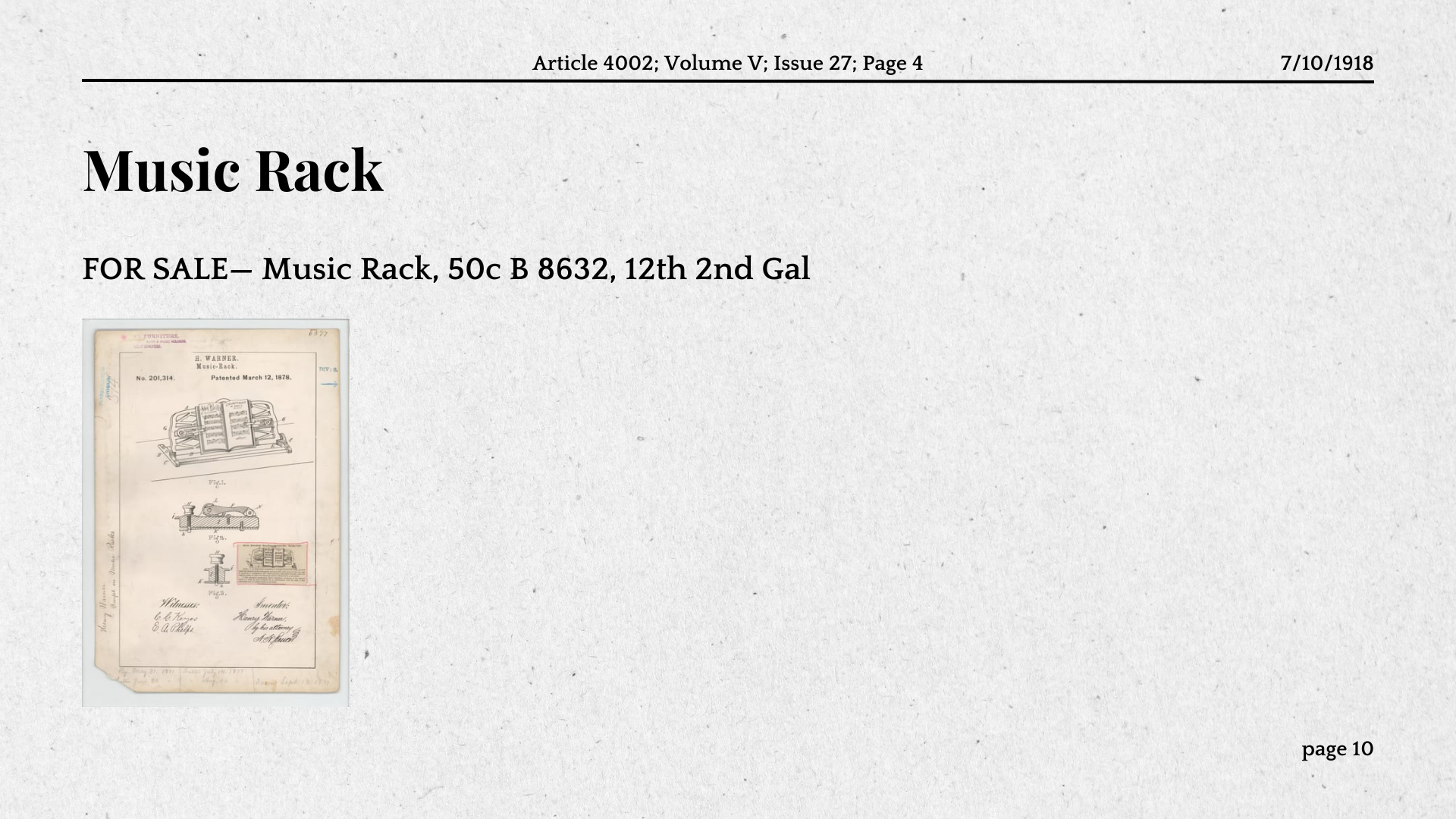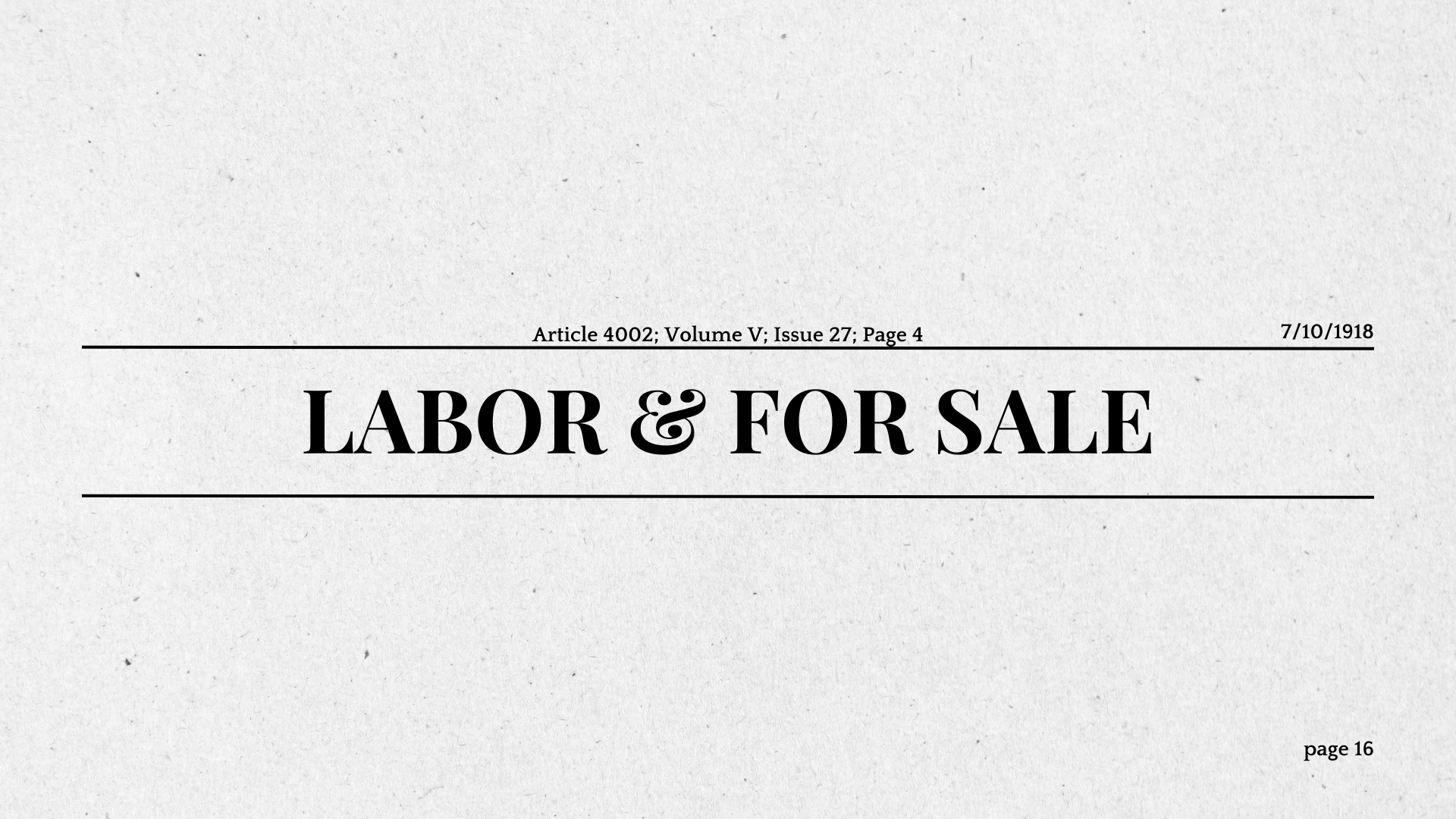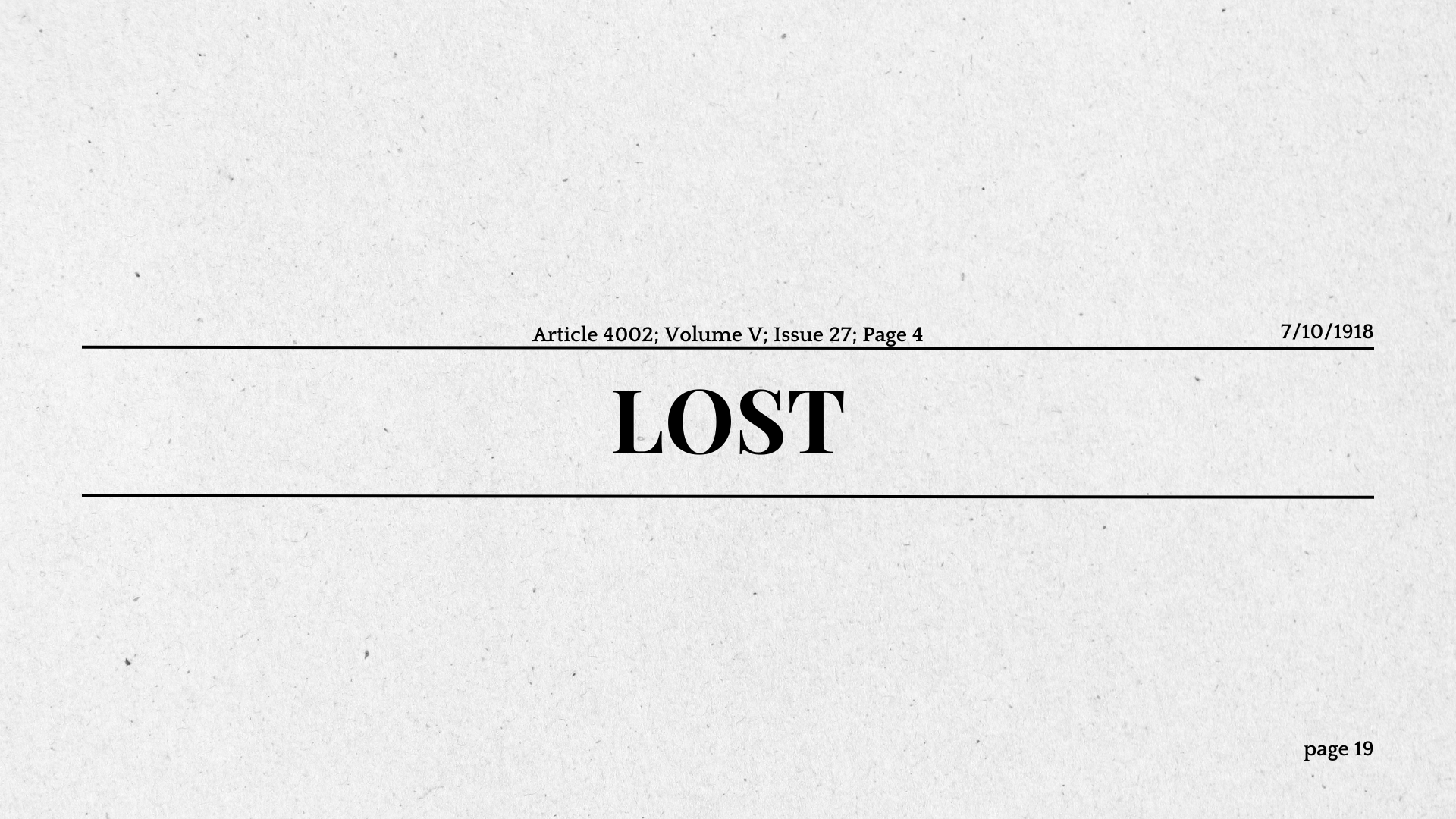Established 2023
The Umpire Advertisement Column
Monday, November 11, 2024
Alexander Kelley
The Umpire Avertisement Column
Article 4002; Volume V; Issue 27; Page 4 7/10/1918






















Analysis & Reflection
For Sale: guitar, necklace (different colors), music rack, birds, fob, clothes, and brushes
Labor: sharpening of shears and scissors, typewriting
Labor & Sale: umbrellas and umbrella repair
Lost: spectacles
The Umpire Advertisement column is on the last page of most of the issues. The column details items “lost,” “for sale,” “wanted,” and things people are “looking for.” In addition, the adverts can promote skill-based labor. The column elucidates elements of prison life, indicating the cost of items while showcasing the scarcity and desirability of specific resources and individuals.
Before the advertisements are listed, there are clear instructions on how to use the ad column. To list an item, individuals must reach out to an advertisement “overseer.” The advertisements are consistently adjusted, indicating the sale of listings. Failure to notify the column when items sell terminates future usage of the advertisements.
The structure of the advertisements communicates four details in a singular line: the classification of the ad, the item or labor, the cost, and the location in which people can reach the intended advertiser.
The guitar and music rack adverts indicate the creativity and hobbies of prisoners. Furthermore, these items demonstrate inmates' desire to refine their abilities and develop new skills. By seeing these items for sale, the dynamic nature of incarcerated individuals can be better understood. Deviating from some narratives that attempt to describe prisoners as one-dimensional, defining their identity by their crime. Through hobbies like music, we can see the personality of prisoners and their desire to challenge themselves and grow even in tumultuous conditions. Items like the clothes and brushes illustrate inmates' attention to hygiene and appearance. These items underscore demand in the prison and demonstrate the lack of access inmates have to traditional hygiene materials.
Skilled labor was a method for incarcerated individuals to make money in prisons. By marketing their skills, inmates could make money while helping other prisoners. In this edition of The Umpire, typewriting and sharpening are offered. Typewriting was a great skill to access in prisons as it could help inmates draft legal documents or letters home. Having typed legal documents was a huge advantage as the paperwork would be legible and professional. Typed letters would make communication easier and ensure handwriting was legible. Sharpening was necessary for tools like scissors as it helped them maintain their longevity. Scissors were needed for haircuts, grooming, art, hobbies, craftwork, sewing, repairs, and document preparation. These usages made scissors a desired commodity, making their sharpening a necessary task for owners.
Umbrellas are one of many items that elucidate the conditions at Eastern State Penitentiary. In Eastern State, solitary confinement was mandatory for many decades. This protocol meant many prisoners would be left alone for twenty-three hours. However, they would be allotted one hour in the prison yard. Many prisoners looked forward to this time. However, if the weather was poor, this time could be taken away. Therefore, umbrellas ensured inmates could consistently go outside regardless of the weather.
The “lost” column created a mechanism for inmates to recover their missing items. In this circumstance, an inmate had lost his spectacles and was hoping to get them returned. In the advertisement, he includes where he lives in hopes someone will return his valuables. Such advertisements elucidate the community in prisons as they rely on each other to do the right thing and return possessions. In addition, this column can help other inmates keep an eye out for items that might be in a different unit.
The Umpire’s advertisement column gives insights into the goods, services, and possessions circulating the penitentiary. In addition, it can illustrate elements of programming within the prison. Considering items like typewriters are available, we can see vocational programming and other skills may be present. Furthermore, having skilled laborers can allow other inmates to develop skills marketed in the column. Labor opportunities and the circulation of goods such as instruments demonstrate the dynamism and passion of prisoners. They strive to better themselves and fulfill their curiosity in a challenging environment. Perseverance is a prevalent motif in this advert column, and I would be curious to analyze further issues to see if this theme is sustained.
Bibliography: All images are from before the 1920s; therefore, each selection is under fair use. Modern photographs are fair use/have creative commons license for full usage.
